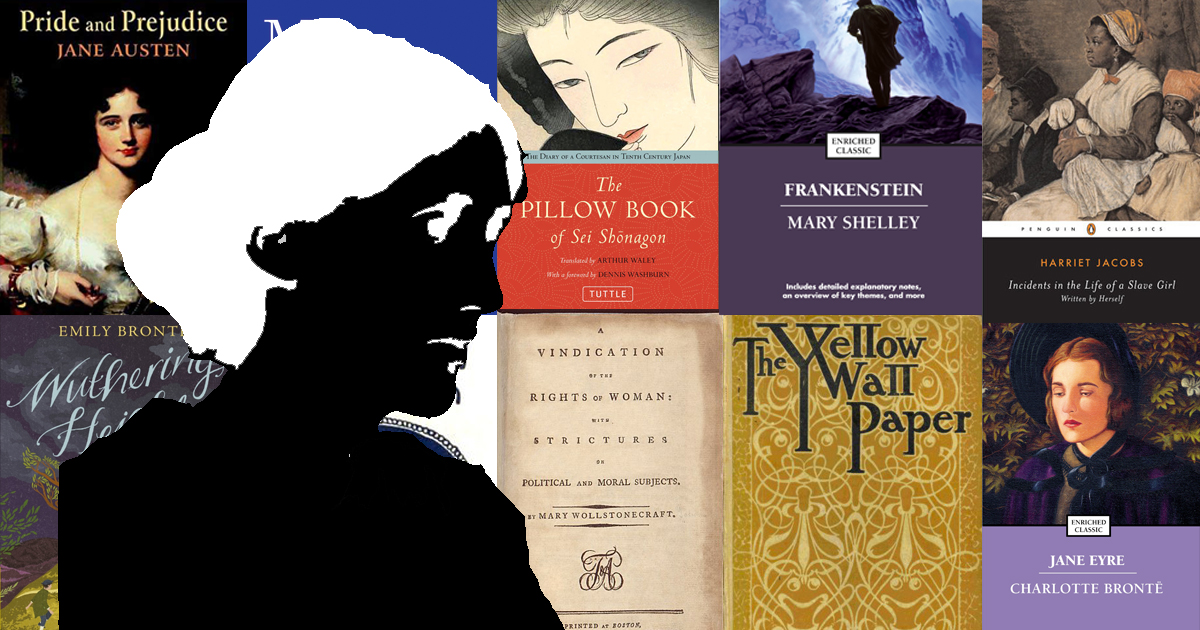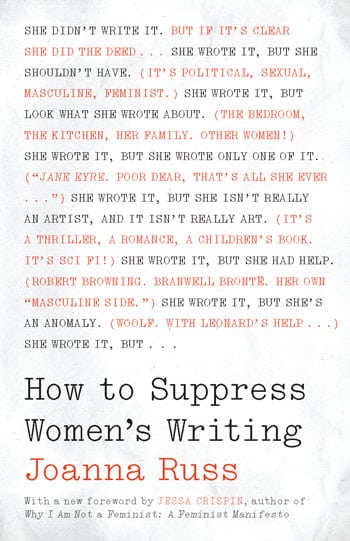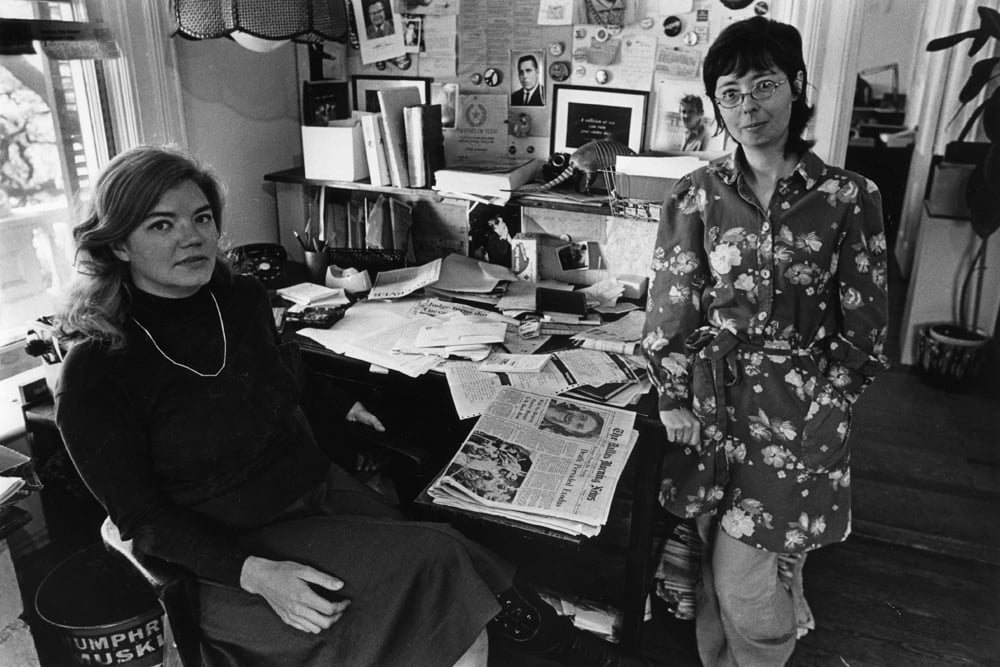
A Feminist Literary Classic Gets a Timely Reissue, and it’s Still Maddeningly Relevant
How many times do women have to write this book before someone takes us seriously?
Nearly four decades after she penned it, Joanna Russ’ How to Suppress Women’s Writing has just been reissued by the University of Texas Press, and it’s as timely as ever.
That’s the problem.
The book is exhausting and wry and depressing, a deeply sourced journey through the misogyny of the making of the English literary canon. Russ identifies nine means by which women’s writing has historically been sidelined or snuffed out. Gatekeepers, writes Russ, might “pollute” women’s agency by suggesting they didn’t really pen their works; that they were too slutty to be taken seriously; or by falsely categorizing their work as regional, or as mere genre fiction, or as solely dealing with domestic (read: women’s) issues. Or, when women writers’ talent couldn’t be denied, critics have long cast the most notable writers and poets as anomalies among their gender (See: Dickinson, Emily).

By Joanna Russ
University of Texas Press
$19.95; 224 pages
Even dilettantes of English lit will find many of Russ’ references familiar — she relies heavily on the work and criticism of Virginia Woolf, the Brontës and Jane Austen — but book nerds especially will find this a rich and maddening trove. Russ’ argument is unassailable, the book rife with evidence for the means of suppression she identifies. She recalls, for example, that Wuthering Heights was initially received as a brutal and melancholy — and ruggedly masculine — exploration of human selfishness, depravity and anguish. That was before, of course, it was revealed to have been written by a woman. After Emily Brontë’s name became attached to the book, it morphed, as if by misogynist magic, into soapy romance unfit for serious readers.
Not much has changed in the 40 or so years since Russ wrote How to Suppress. And it’s truly some bullshit (one way to suppress women’s writing: deride it for being written in the vernacular) that How to Suppress Women’s Writing feels as fresh today as it did decades ago. It’s bullshit that A Room of One’s Own does, too. So too does the work of Christine de Pizan, who took up the pen in the early 15th century to repudiate misogynist portrayals of women in the literature of the Middle Ages.
How many times do women have to write this book before someone takes us seriously? We have plenty of 21st-century works on the subject, too: Rebecca Solnit’s Men Explain Things to Me comes to mind.
In the world of publishing, women continue to be relegated to subjects wrongly perceived as being less serious, and they’re more likely to write, and be asked to write, about women’s issues. In another universe — perhaps one of the feminine dys/utopias imagined by Russ in the science fiction for which she’s best known — I am not writing this book review. A man is writing this book review.
Alas, he isn’t. I am. And I am somewhat embarrassed to admit that even I — a woman who styles herself a feminist, who is paid to think about things like this — was deep into unpacking this book, particularly the new foreword by Bookslut founder Jessa Crispin — before I spotted the wrench in the whole machine.
In her foreword, Crispin warns the white, middle-class women readers of How to Suppress away from simply feeling validated by an extensive and erudite account of the ways in which, as a group, they’ve been silenced, and instead attempts to guide them into something more self-critical. She urges the reader “not to let this book be a reinforcement of your own worldview.” This is a necessary intervention in a book that is expressly about white, middle-class women’s writing.
Instead of asking women to make this book do something it doesn’t do, what if we asked men to make this book do precisely what it was written to do?
What Crispin is getting at is that many of the themes in How to Suppress are broadly applicable to other manifestations of literary marginalization — for example, writers of color are often sidelined as “regional” minds rather than observers of the universal human experience, and white women gatekeepers in the publishing and editorial professions are as responsible for this marginalization as any. An astute reader will draw out some of those connections on her own, but many more, I fear, will recoil at being asked to hold up a mirror to their ugliest selves. Nevertheless, this is work that white women must do for and with other white women, but it is too thin here. This work takes guidance and patience and quite a bit more effort than saying, “Do better, white women,” before staring vaguely into the middle distance.
I wish that Crispin had approached her plea with even the barest whiff of evidentiary rigor, or set out a thoughtful list of exploratory questions to guide white woman readers through the sticky, aggravating and essential business of realizing that sometimes the proverbial boot on the neck is one we’re wearing.
But I see another, parallel problem to Crispin’s plea: She takes it for granted that the audience for this book actually is white women. Why do we not assume, instead, that the audience for this book is men? Might this assumption perhaps have something to do with the fact that How to Suppress Women’s Writing is as relevant today as it was 35 years ago?
Instead of asking women to make this book do something it doesn’t do — to examine the many ways in which white women have been complicit in the silencing of other marginalized peoples — what if we asked men to make this book do precisely what it was written to do?
Men should be buying multiple copies of this book and gifting them to their brothers on birthdays and holidays. They should tote this book on their subway commutes and interrogate its claims at their book clubs. (Do men have book clubs?) Men should be reading passages from this book aloud to each other between courses at Buffalo Wild Wings.
I am tired of the people who are responsible for the problem of patriarchy being excused from doing something about it. I am tired of reviewing books about women’s struggles. I am tired of writing the same article about abortion restrictions every three months. I am tired of posting research about the prevalence of rape culture and having some 19-year-old president of the local chapter of Delta Alpha Dudebro pop into my Twitter mentions with the words “prove it, bitch” and a Pepe the frog meme.
Is there a men’s movement for gender equality? Have I missed it? The fact that I genuinely don’t know suggests an unsatisfying answer to the question.
Indeed, Flavia Dzodan’s rallying cry — “My feminism will be intersectional, or it will be bullshit,” has become one of the fundamental touchstones of the modern feminist movement. (Intersectionality is an analytical framework developed by the critical race theorist Kimberle Crenshaw — it looks at the ways in which interlocking points of privilege and power affect and perpetuate oppression and marginalization.) This is a hard-won achievement for women of color, for trans women, for disabled women, for queer women, for nonbinary people, and for so many others who have historically been shut out and silenced. (Shut out, in fact, by second-wave feminists like Joanna Russ, who was rightly and roundly criticized for the transphobia in her classic The Female Man, for which she later apologized.) Intersectionality is difficult and messy, but today’s feminist spaces are places where conversations about “and” are happening: Gender and race and sexuality and disability and class and immigration status and….
This is all to say that I genuinely see a bright, intersectional future for feminism. Already, I see the white women that popular feminism has historically privileged moving back (though not as much as we should) and women of color, trans women, queer women, disabled women and others moving up. I hear these conversations daily, and I know people who are doing this work. It is often inadequate but it is, at least, in progress.
I cannot say the same for men. I know there are men who care about gender justice — some even come to it before they have the daughters that seem to inspire so many to finally give a shit — and even a few who speak on it, loudly and often, and publish on it, and talk to their fellows about it. But is there a men’s movement for gender equality? Have I missed it? The fact that I genuinely don’t know suggests an unsatisfying answer to the question.
I am not the audience for this book. My dad is the audience for this book. My husband is the audience for this book. The guy falling asleep behind the counter at my local bodega is the audience for this book. Mike Pence is the audience for this book. Justin Trudeau and Andy Samberg and the remaining members of Journey are the audience for this book. I don’t need this book. Your son needs this book. Your uncle needs it. Your bartender needs it.
Maybe you need it.


